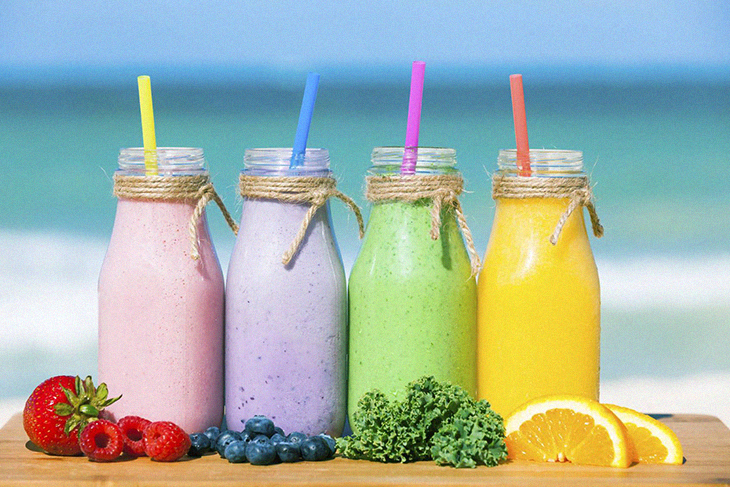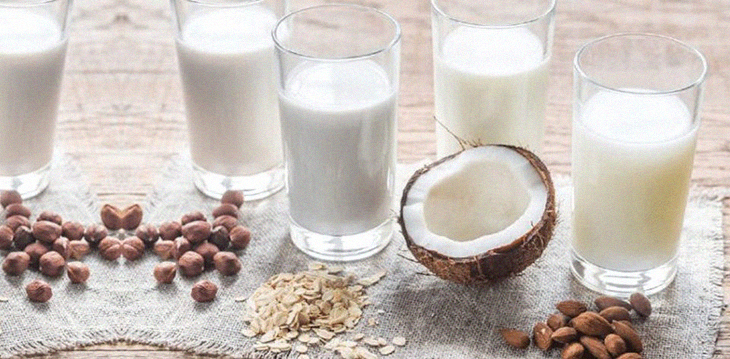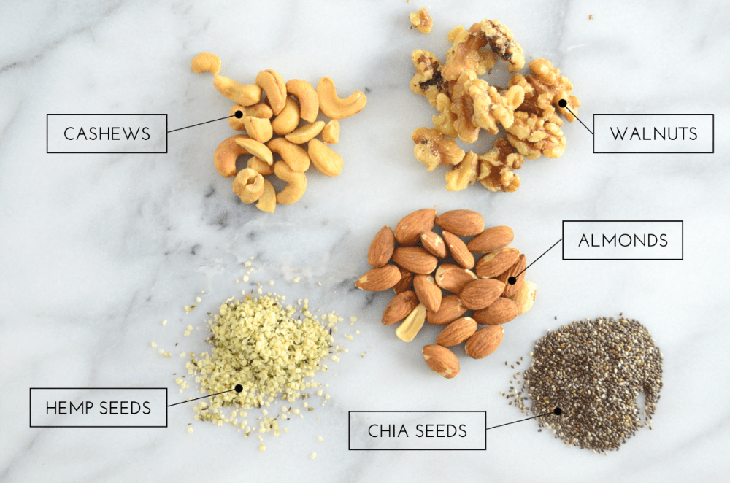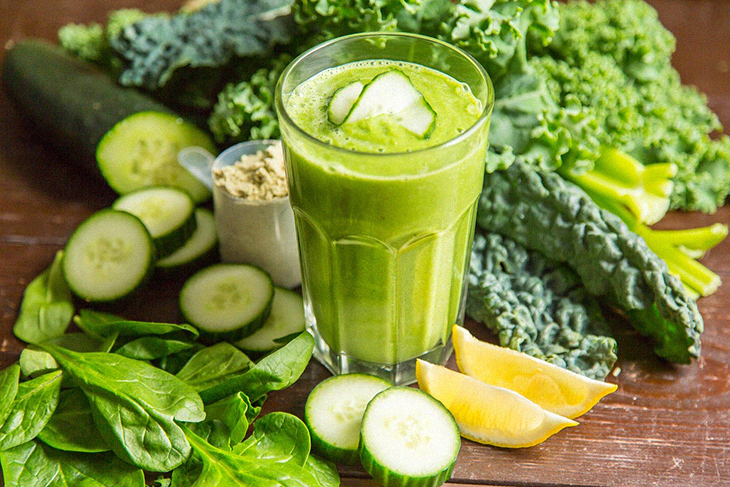Is Your Smoothie Healthy? Here are 5 Ways Your Smoothie Is Actually Making You Gain Weight

Don’t be fooled by the bright color and use of incredibly nutritious fruits and vegetables in your smoothie. This doesn’t mean that it’s actually low sugar, low calorie or even necessarily good for you. Even the greenest of smoothies can make you gain weight if you don’t watch what you put into it. The fact of the matter is, regardless of where you get it or how you make it, it could be majorly packed with sugar, fat and calories.
Are Smoothies Okay to Have for Breakfast?
Although smoothies can be healthy enough to have for breakfast, you have to make sure that they are filled with an acceptable balance of nutrients that include protein, carb and healthy fats.
For author of the book Read It Before You Eat It – Taking You from Label to Table and creator of BetterThanDieting.com, Bonnie Taub-Dix, RDN, unlike juicers that normally strip away the fiber from the fruits and vegetables, smoothies don’t do that – which actually makes them more nutritious.
She explains, “Smoothies can make a healthy breakfast, but they’ve evolved into having a health halo even if you put a lot of fruit juice and syrups into them.” Taub-Dix adds, “It can make you feel invigorated for a little bit because of the sugar high, but then you’re left feeling hungry shortly afterward.”
In order to get the most out of your smoothies – where they are more filling and have less sugar content – dieticians recommend using protein powders of at least 20 to 30 grams per meal. Aside from being a great way to get in enough of this macronutrient, there are a number of varieties that use very little to zero sugar, or zero artificial sweeteners.
The dietician nutritionist also suggests to be cautious about the liquid base you choose for your smoothie. Many fruit juices are actually loaded with sugar without any true protein and fat. She suggests that you choose either a low-fat milk or better yet, an unsweetened, non-dairy milk alternative instead. These include coconut, almond or cashew milk. Although they won’t have as much protein as regular cow’s milk, at least they do have some healthy fats that will help keep you feeling fuller, longer.

Taub-Dix also says, “I like using Almond Breeze’s unsweetened almond milk. It’s only 30 calories per serving and is an excellent source of calcium and vitamins D and E. It’s also a good source of Vitamin A and is lactose -free, gluten-free, and dairy-free so the whole family can enjoy it.”
Other options for healthy fats are unsweetened nut butter, chia, hemp or ground flax seeds. Plus all that added crunch will work for better digestion as well. Taub-Dix also suggests, “Adding some 2% Greek yogurt also incorporates healthy fats and protein without loading too many calories. It also adds creaminess and volume, so it promotes satiety.”

Another way to infuse some extra sweetness into your smoothie is by adding some low-sugar fruits into it without adding too much sugar. It’s important to remember to only use one or two servings at the most as well. The problem with adding too many fruits to your smoothie is that it will cause your blood sugar levels to rapidly rise, which then means that you’ll crash soon after. And using frozen fruit rather than fresh ones can also help thicken your smoothie, and make it creamier too.
Another tip from Taub-Dix to help digestion and promote feeling full and satisfied is to eat your smoothie with a spoon, rather than drinking it with a straw. Another expert, clinical dietitian at Stanford Health Care, Leah Groppo, shares, “It’s actually better to chew and swallow food rather than drinking food for fullness.” And while there is no actual evidence that blended fruit is better absorbed by the body than when it’s chewed, it does move through you faster.
Does This Mean That Smoothies As Good As Eating Fruit?
The answer to this question is yes and no, says Taub-Dix. No if you use too much fruit and fruit juice as the base of our smoothie, causing you to take in too much sugar and calories. Yes if you only use two fruit servings, allowing you to get a good amount of fruit while also getting all the antioxidants.
What About Green Smoothies? Are They Healthy?
For those that struggle to eat their vegetables, then smoothies are a good way to get more greens into your system, with flavors that you actually enjoy. Popular choices are dark, leafy veggies that are packed with fiber and vitamins A and K, as well as sweet potato, zucchini and frozen cauliflower. Add in some matcha powder (a form of green tea), or other adaptogens (healing herbs like maca root), turmeric, and other warm spices like cardamom and cinnamon to add flavor.

Taub-Dix adds, “Some people who are vegetable averse will find it easier to sip on a green smoothie if it tastes like strawberry banana. And then, there are some people who like to load up on greens and blend it with fresh herbs instead of fruit. It all depends on your taste preference.”
Clinical Dietitian Groppo reiterates that you also need to be mindful of your smoothie portions. Be sure to keep your snack smoothies to 150 calories or less, and for those used as meals, at 350 calories or less if you’re goal is to lose weight. But for those that are just maintaining their weight, they can make their smoothies 500 to 600 calories if used as a meal replacement.
So now that you know how to make your smoothie into a healthy snack or meal, here are 5 ways they could be making you gain weight, and the best ways to fix the issue.
1. Your Glass Is Too Big
The Mistake: More often than not, when people are drinking big smoothies, they think they’re doing their bodies good because they are taking in more nutrients. But in reality, they could very well be drinking way more in calories than they think. Some smoothies can have a pound or more of produce, definitely more than what you would actually eat raw for a single meal. This means that you are taking in more carbohydrates, more sugar, leading to more calories. According to Groppo, make sure that your smoothie isn’t over eight to ten ounces. And when buying pre-made of made to order, check the ingredients because many times, they are overloaded with unnecessary grains and sugars it doesn’t need.
What to Do Instead: When making smoothies, measure them out in 8-ounce servings and keep the rest for later on. Also, if you decide to eat out, order the kiddie size, which is much smaller than the regular size, usually 10 ounces or so. Or if they don’t have a kiddie option, ask for an extra takeout cup and divide the smoothie to consume at a later time.
2. You’re Using Too Many Ingredients
The Mistake: While the majority of smoothies are made with fresh fruits and veggies, there are other added ingredients like whipped cream, yogurt, sorbets, sweeteners, and even ice cream, which are all items that increase calories. Groppo also warns that many bottled and made-to-order smoothies tend to have anywhere between 300 to 600 calories in 16 ounces. She explains, “Don’t assume that one package or one bottle is one serving. Look at the nutrition label to see how many servings are in it.”
What to Do Instead: Be sure to double check the labels on bottled smoothies to watch out for seed or nut butter, coconut oil, or avocado since these all have tons of calories. When given the chance, make the smoothie yourself at home instead to better control what goes into it.
3. You’re Smoothie Is Overloaded with Sweeteners
The Mistake: If your smoothie tastes especially sweet, then it’s definitely overloaded with sweeteners. In fact, most of the store-bought options have as much sugar as regular sodas. Many of the ones that you find in popular smoothie joints actually use white sugar, syrup, maple syrup or honey, which might give you an energy boost at first, but will leave you cranky and tired just a few hours later.
What to Do Instead: When making your smoothie, rather than using more fruits, use vegetables instead. Greens like cucumber, kale and zucchini are great choices, and use up to two servings of fruit only.
4. You’re Not Using A Spoon to Eat It
The Mistake: Although it might sound bothersome, especially if you’re on the go, choosing to drink your smoothie rather than eat it will mess up your blood sugar. It will cause it to spike, giving you a momentary high, but leaving you hungry and cranky soon after. And if there is more sugar than protein and healthy fats in your smoothie, you’ll get hungry faster too.
What to Do Instead: Do yourself a favor and grab a spoon when you finally decide to have your smoothie. Groppo explains that when you eat your meal slower, you’ll get fuller and will have eaten less as well. Also, add good fats and proper protein to your smoothie to make you feel full for a longer period of time.
5. You’re Drinking It at the Wrong Times
The Mistake: Depending on the time of the day you drink your smoothie, it can actually do your body more harm than good. Your body is better at processing and absorbing sugar after being active, which will also help in keeping your blood sugar from spiking. Often times, people tend to drink their smoothies first thing in the morning, or as a replacement for a meal, but they should reconsider this.
What to Do Instead: To get the best out of your smoothie, take it after a workout. But if post-workout isn’t possible, then choose a time within the day after you’ve been most active. Taub-Dix explains that since liquids are easily digested, much more than solids, it makes it a better after-workout beverage, especially if you need to replenish your carb, protein and allowable sugar for the day.



